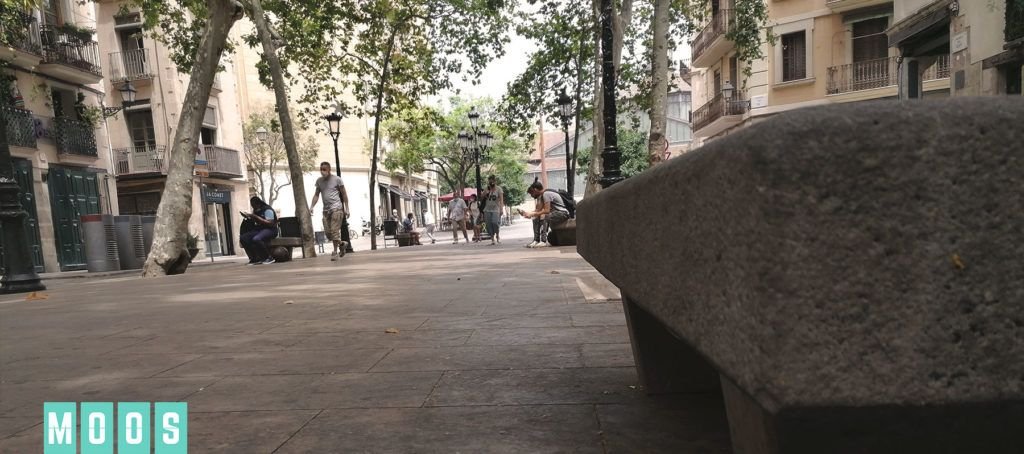Between the famous church of Santa María del Mar (more recently known as “Catedral del Mar”, due to the book of the same name by Ildefons Falcones) and the Mercado de Born, Passeig del Born extends for just a few streets.
One of the most beautiful and emblematic areas of this neighborhood of medieval origins.

Today, this avenue is the center, not only of the gastronomic life of the neighborhood, but also of a design district that includes clothing, accessories, art, decoration and more stores. And at night, Passeig del Born is one of the main protagonists of the city’s nightlife.
And while it is known to all, this avenue has a name that many wonder where it comes from. Yes, as the name of this article says, the origin dates back to the Middle Ages.
The growth of the city
By the 13th century, the ancient walled Roman city had exceeded its limits.
New settlements had grown, over the years, around convents and churches that were outside the walls, and one of them was Vilanova del Mar: a town made up of fishermen and port workers, around the old church of Santa Maria de las Arenes, which would later become Santa María del Mar.
The economic growth of Barcelona and the active port life, would make this area a dynamic, bustling place, where cultural and religious shows and activities would take place.

One of those activities (among the main attractions, by the way) that were carried out in this avenue were the jousting competitions.
Those who know Passeig del Born personally will be able to say that the street does not have the ideal length to hold such tournaments. And it’s true.
But that is today, because the walk was much longer in medieval times, reaching up to where Passeig Sant Joan is today, approximately.
In those years this was the most important square in the city.
Wide and extended, it would allow the celebration of all kinds of activities and was the meeting point for Barcelonians: parades, markets, carnivals, processions, popular festivals and even acts of faith carried out by the Inquisition were held there. But it would be the fair competitions that gave the place its name.
The origin of the avenue’s name
(Note: remember the jousting competitions? It consisted of two knights on horseback, each carrying his spear and a shield, placed facing each other, each at the end of a long track. At a signal, they began their charge and the objective was to knock down the opponent)
And why do we say that the fair would be the one that gives the name? Because fighting in a joust, or “tornear“, was also known by the name of “bornar“.
Between the 13th and 17th century, Passeig del Born (or Borne, in Spanish) was the center of this social life, and “bornar” was what gave it its identity and name, until today.

In a document known as “Rúbriques de Bruniquer” appears the oldest record of a fair competition held in this place: on September 9, 1372.
It is known that the space was surrounded by “tablados” and “palenques” where cloths were placed in the colors of the Catalan flag (la senyera). Nobles, authorities and important figures sat in stands.
But it was not only about competing, because previously, a religious service and a procession to the esplanade were held where the show took place.
Many of these jousts were for purely sporting purposes: the winners were awarded jewelry, which then were handed over to their beloved or ladies. But also a knight could face a joust when challenged by another; in such cases, they fought until first blood or even death.
The arrival of the 18th century would bring important changes to the appearance of the avenue.
The War of Succession and the Siege of Barcelona until September 1714, when the city was finally defeated, brought the destruction of much of the Barrio de la Ribera and the disappearance of an important sector of this avenue.
A great survivor of a past full of history, although transformed, Passeig del Born always invites us to visit it, to recognize the traces of the centuries in its buildings and to enjoy the life that continues to fill its spaces.
Source: ubdeb







0 Comments